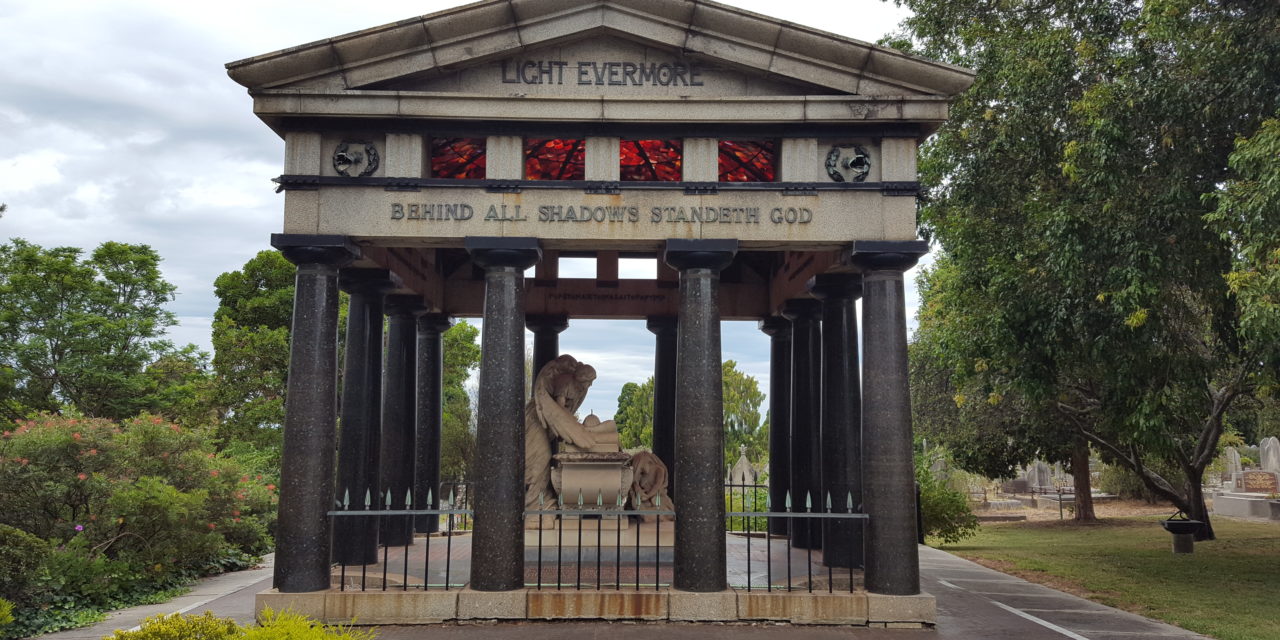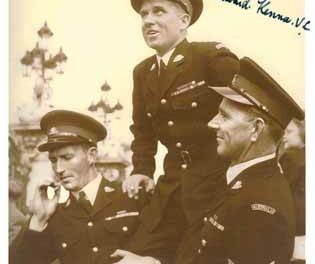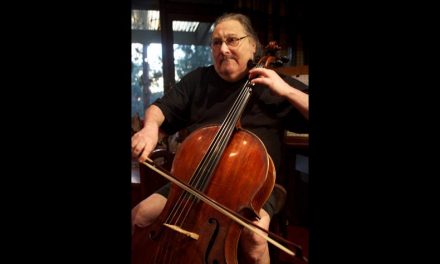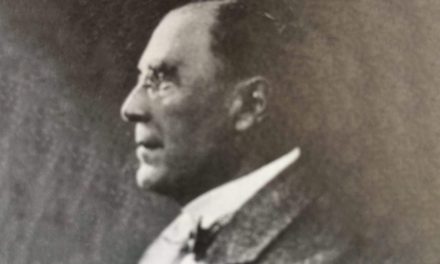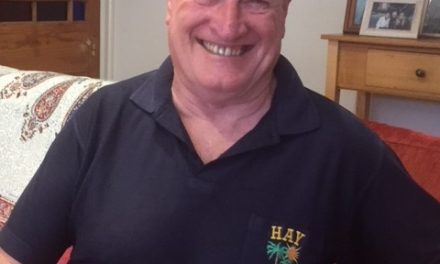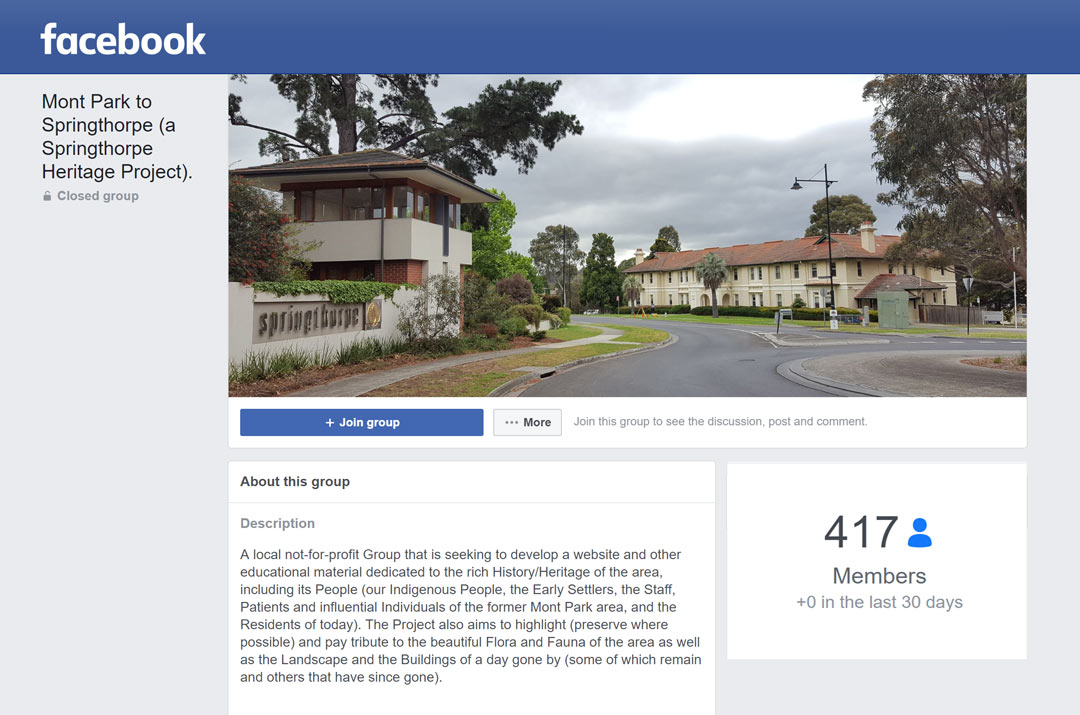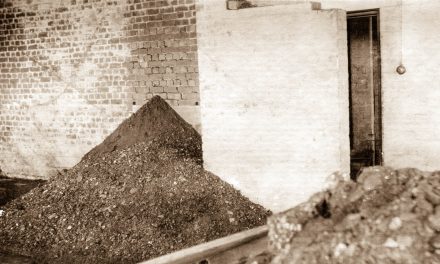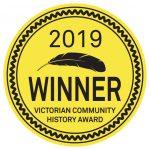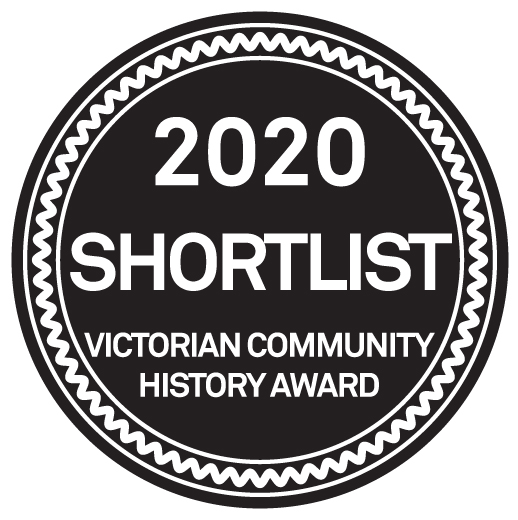Love where you live! The spacious parklands, the beautiful old heritage listed trees, the native bush, curving streets and attractive old buildings, combined with well laid out modern homes and peaceful surrounds make up the estate named “Springthorpe” situated north of Melbourne, beyond Heidelberg.
The estate was named after Dr John Springthorpe who was born in 1855 and educated at Wesley College in Melbourne. He graduated from Melbourne University in 1879 taking degrees with distinctions in Arts and Medicine and after further study overseas, joined the Victorian Lunacy Department, thus beginning his long crusade for improvement in the approach to mental health treatment of patients and their care. Dr Springthorpe opened a practice in Collins Street Melbourne.
During World War One, Springthorpe served as a Lieutenant Colonel in charge of hospitals in England and Egypt from 1914 to 1918.
Dr John Springthorpe was a leading advocate for the reform of conditions in Mental Hospitals for patients with mental and intellectual handicaps. As President of the Australian Medical Association (1891) Springthorpe promoted the modern and sometimes radical treatment of the mentally ill. He was totally against the practice of confining patients inside under lock and key behind high walls. His own personality and interests in life outside his medical practice had a lot of influence in how Mont Park and other Hospitals developed an “Open Plan” policy with the daily outdoor activities of the patients who lived there.
From his position on the Lunacy Department, he agreed with the aims of Dr Ernest Jones (Victoria’s first Inspector General of the Insane) who lobbied for Hugh Linaker to be appointed the first Landscape Gardener at the new Mont Park Hospital in 1912.
“Jones, as his colleague Springthorpe pointed out, was a ‘builder’ and lover of ‘trees’, ‘foliage’, ‘shrubs and flowers’. Springthorpe himself shared this passion, lavishing much care on his garden at Murrumbeena and making many references to horticulture in his extensive diaries.” (1)
“Springy” as he became known, was a very active man in mind and body. He belonged to a cycling club and loved riding out for the day through the Victorian countryside. He also played cricket and local Australian rules football. Later, in 1903 Springthorpe joined the “Wallaby Club” a group of intellectuals who took long organized walks around the outskirts of Melbourne and into the mountains.
He was an active horseman who with his great friend John Monash and others from the Melbourne Medical Society formed a hare and hounds pack. Another friend, Dr F .Kingsley Norris wrote “After covering a few miles of the countryside, the pack gathered at the Old England Hotel at Heidelberg to recover that which they had lost en route, before sitting down to a good dinner” (2)
Other advocates of gardening and fresh air in the treatment of mental and general health issues in the early 20th century (known as the “Improvers”) were Sir John Monash, and William Calder who was Chairman of the CRB. Monash designed the Water Tank built on Gresswell Hill, to supply Mont Park and the other hospitals around it.
With the support and encouragement of men like Springthorpe and Ernest Jones, Linaker began working on his landscaping plans for the large area of bush and farming land known as “Mont Park” Instead of being locked up in hospital wards, the patients worked outside, producing vegetables, fruit, dairy products, and fresh meat. A plant nursery was established to supply seedlings for many Victorian Parks, Gardens and other Hospitals. Hugh Linaker became the State Superintendent of Victorian Parks and Gardens and remained so until 5 days before his death in 1938. His cottage remains near the old Mont Park entrance to Plenty Road opposite Bundoora Park.
The 1880s saw “Marvellous Melbourne” as a city full of cultural activities. The Royal Exhibition Building in Carlton was finished in 1880 and opened its doors to the famous International Exhibition of that year. In 1886 Springthorpe had his portrait painted by a young and very promising artist named Tom Roberts who, with Fredrick McCubbin may have met Springthorpe during student days as they attended anatomy classes at Melbourne University. About this time Roberts was organizing excursions to paint “plein air” along the Darebin and Merri creeks north of Melbourne with many of his fellow artists from student days at the National Gallery of Victoria.
Dr John Springthorpe married Annie Inglis in 1887 and set up their home named “Camelot” at No. 83 Collins Street in Melbourne. Annie was a cousin of Emma A’Becket who studied at the Gallery School with Roberts, McCubbin, Arthur Boyd, Phillips-Fox, Follingsby, Richardson and sculptor Bertram McKennal. 1888 saw the opening of Grosvenor Chambers Artist’s Studios at No.9 Collins Street and the Victorian Artist’s Society was established in Albert Street where many exhibitions were held. The Springthorpes’ social life and group of friends were deeply immersed in the local art scene and Melbourne cultural activities.
Tom Roberts was the largest contributor to the now famous 1889 “9 by 5 Impression Exhibition” held at Buxton’s Art Gallery in Swanston Street. One of his paintings “By the Treasury” caused quite a stir in the press because of the seemingly quick sketch like use of paint, capturing a man crossing the road on a wet winters day, outside the Grosvenor Chambers. This little painting, done on a cigar box lid was one of several works bought by Dr Springthorpe from the Exhibition. He continued to add to his art collection and became a leading patron of the artists during his lifetime. Following the birth of his first child in 1891, Roberts painted a small study of Annie and daughter Enid on a wooden panel.(Sold at Sothebys’ Auction House in 2016).
Annie Springthorpe sadly died in child birth in 1897. Dr Anne Sanders wrote:-
“Following the death of his beloved Annie, Springthorpe commissioned a monument to her, drawing on the expertise of his artist friends, Longstaff and Bertram Mackennal, and the architect Harold Desbrowe Annear. Known as the Springthorpe Memorial, it was completed in 1901 at Boroondara Cemetery” (3)
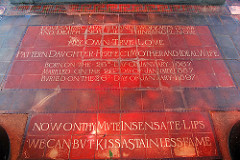
Springthorpe memorial to his wife Annie who died in childbirth
In 1909 Springthorpe moved out of the city to a garden estate in Murrumbeena named “Joyous Gard”. His love of the landscape and outdoor activities was one of the foundation stones of his attitude to mental health. He died in 1933, having had a great influence in the development of the Mont Park Psychiatric Hospital complex. The vast tracts of parkland, well established native and exotic tree plantations, surrounding the many (now heritage listed) buildings are what we see today.
During the 1990s most Mental Health Hospitals were gradually decommissioned, so Mont Park closed its doors to medical activities. La Trobe University took over many of the “Heritage” listed buildings for student housing and education purposes. As we stroll through the former hospital grounds, passing under old trees that were planted by Hugh Linaker, we can admire the open vistas so important to Dr John Springthorpe and his colleagues in the early 20th century. Thanks to them, our little piece of “Marvellous Melbourne” has survived and who better to name it after than Dr John Springthorpe! Enjoy where you live!
Story by Erif Vincent
A Resident of the Springthorpe Retirement Village
2017
REFERENCES:
- Julie Mulhauser. “Australian Garden History” Vol.20, No.4 April/May/June 2009, page 12
- F.Kingsley Norris “No Memory for Pain” an Autobiography. Heinemann Melbourne 1970
- Dr. Anne Sanders. C .Chapman (Ed) “Inner Worlds: Portraits and Psychology”. National Portrait Gallery. Canberra. 2011
Iliya Bircanin, and Alex Short, “Glimpses of the Past: Mont Park, Larundel, Plenty” Melbourne 1995
William Splatt and Dugald McLellan ”The Heidelberg School – The Golden Summer of Australian Painting” Lloyd O’Neil Melbourne. 1986

